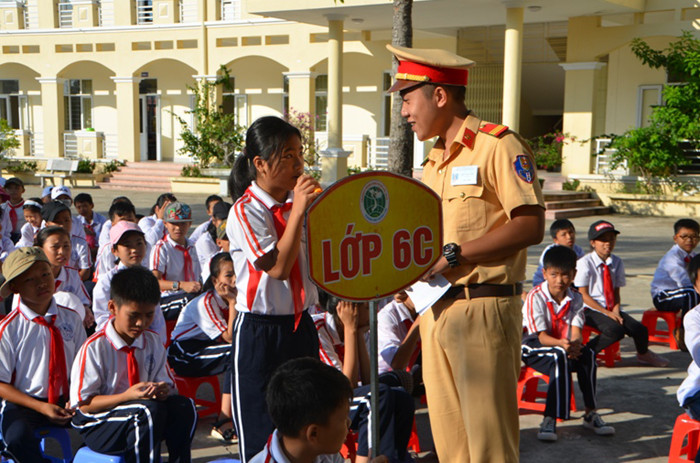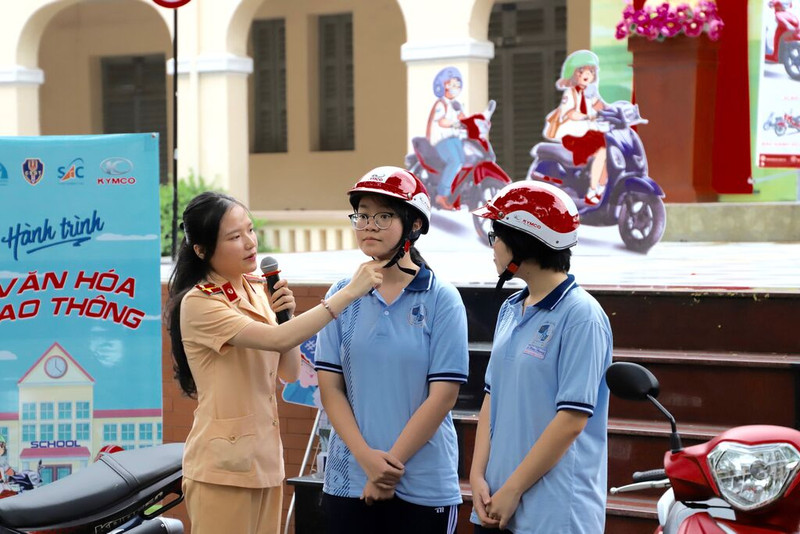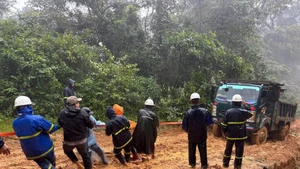Thus, preventing and reducing traffic accidents involving children is an urgent issue, not only for families and schools but for society as a whole.
Formal education on traffic safety
Le Kim Thanh, Vice Chairman of the National Traffic Safety Committee, stated that children are both victims of and contributors to traffic accidents, often due to a lack of knowledge and skills.
He reported that most accidents result from avoidable errors, such as failing to wear helmets, crossing roads improperly, speeding, using mobile phones while operating vehicles, riding three or four abreast, or being caught in traffic "blind spots".
To achieve the goal of zero road traffic fatalities by 2045 and align with government directives on ensuring traffic order and safety, the Prime Minister issued Directive No. 31/2023/CT-TTg to strengthen traffic safety for school-aged children. The National Traffic Safety Committee also developed Action Plan No. 282, introducing measures such as prohibiting vehicle use by unqualified individuals. Additionally, the Committee urges collaboration across the political system, ministries, and relevant sectors.
Le Kim Thanh emphasised that beyond allocating adequate resources to improve traffic infrastructure—especially around school gates—with essential features such as traffic signs, speed bumps, pedestrian crossings, and designated student pick-up and drop-off zones, the education system must further enhance formal instruction on traffic laws and safety.
This must include comprehensive materials and curricula suited to the psychological and physical development of each age group, alongside extracurricular activities aimed at fostering students' awareness of traffic safety, he said.
New legal regulations, including the Road Traffic Order and Safety Law and its guiding decrees, contain an entire chapter dedicated to road traffic order and safety for all school levels, outlining the responsibilities of ministries, sectors, educational institutions, and families.
Building a sustainable traffic culture
 |
| At a traffic safety education programme has been implemented for secondary school students (Photo: hanoi.gov.vn) |
In Viet Nam, traffic safety education has long been incorporated into school curricula and is increasingly prioritised. Currently, schools integrate traffic safety topics across all levels, from kindergarten to high school, through diverse methods such as subject-based learning, extracurricular activities, traffic safety knowledge contests, and practical training sessions on safe road participation.
A study conducted by the Asia Injury Prevention (AIP) Foundation revealed that children who are taught traffic safety habits - such as helmet-wearing - from an early age are three times more likely to comply with traffic laws as adults, compared to those who receive no early education.
With new legal regulations now in effect, this model must be systematically implemented to foster a safe traffic culture and cultivate civilised behaviour in future generations.
Le Kim Thanh noted that knowledge and skills acquired at school alone are insufficient to fully prepare students for real-world traffic situations.
Thus, parental involvement is critical, as parents serve both as role models and direct instructors in teaching children essential traffic safety skills. Their guidance helps young people become more adept at recognising and responding to potential traffic hazards.
At present, in many locations, particularly large cities, there are instances where parents take their children to school without ensuring they wear helmets or even ride against traffic rules. Such behaviours set poor examples, leading children to inadvertently mimic unsafe habits.
A survey conducted in two major cities found that 70% of students who do not regularly wear helmets have parents who also fail to do so. This demonstrates that instilling better traffic habits in children requires adults to first change their own awareness and behaviours, thereby fostering long-term improvements in compliance.
Traffic accidents can be significantly reduced through strong determination and close cooperation among all stakeholders, ensuring that future generations are equipped with traffic safety skills, cultural awareness, and a firm understanding of legal compliance.
















